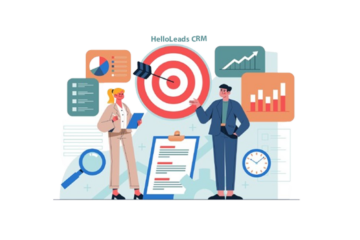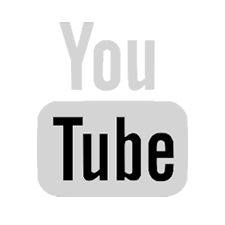
“On-page SEO is not just about keywords and metadata; it’s about creating a user experience that engages and retains.” – Brian Dean
In today’s digital landscape, simply having a website isn’t enough to stand out. With millions of websites competing for attention, search engines like Google play a crucial role in helping users find relevant content. To ensure your pages are easily discoverable by both search engines and visitors, you need a solid on-page SEO strategy On-page SEO refers to the optimization techniques you apply directly to your website’s content and structure. Unlike off-page SEO (which involves external factors like backlinks), on-page SEO is fully within your control. It involves refining elements such as content quality, page titles, meta descriptions, URL structure, and user experience (UX) to enhance both search visibility and usability.
When implemented effectively, on-page SEO not only helps search engines crawl and index your site efficiently but also improves user engagement and boosts organic traffic. Whether you’re a beginner looking to grasp the fundamentals or an experienced marketer refining your strategies, this guide will walk you through a step-by-step approach to mastering on-page SEO.
By the end of this guide, you’ll have a clear understanding of how on-page SEO works and how to leverage it to boost your site’s rankings and attract more targeted traffic.
Key Elements of On-Page SEO
1.Title Tags
Title tags are one of the most critical on-page SEO elements as they help both users and search engines understand what your page is about. A well-optimized title tag can significantly impact click-through rates (CTR) and search rankings.
Best practices:
- Include the primary keyword towards the beginning.
- Keep it between 50-60 characters.
- Make it compelling and relevant to the content.
Example:
- Correct: “Best SEO Tips for 2024: Boost Your Rankings”
- Incorrect: “SEO, SEO Tips, Ranking, SEO Boost, Best SEO Tips”
2.Meta Descriptions
While meta descriptions don’t directly impact rankings, they play a crucial role in increasing CTR by influencing how users perceive your page in search results. A strong meta description can entice users to click through to your site.
Best practices:
- Write concise and informative descriptions (around 150-160 characters).
- Include target keywords.
- Ensure it aligns with the page’s content.
Example:
- Correct: “Discover the top SEO tips to boost your website rankings in 2024. Learn strategies that can help you drive organic traffic.”
- Incorrect: “SEO tips. Everything you need to know about SEO. Read now.”
3.URL Structure
A clean and descriptive URL structure makes it easier for search engines to crawl your site and helps users understand the content of a page before clicking. Optimized URLs contribute to a better user experience and improved rankings.
Best practices:
- Keep URLs short and descriptive.
- Include your target keyword in the URL.
- Avoid using unnecessary characters like symbols or numbers.
Example:
- Correct: “www.yoursite.com/seo-tips-for-2024”.
- Incorrect: www.yoursite.com/article123?ID=452 (Not descriptive and difficult to remember)
4.Heading Tags (H1, H2, H3, etc.)
Heading tags structure your content, making it easier for users to read and search engines to understand. A well-organized heading hierarchy improves SEO, readability, and engagement.
Best practices:
- Use only one H1 tag for the main topic.
- Use H2 and H3 tags for subheadings and structure.
- Include keywords where appropriate.
Example:
- H1: “The Complete Guide to On-Page SEO”
- H2: “What is On-Page SEO?”
- H3: “Importance of Title Tags in SEO”
5.Content Optimization

High-quality, relevant content is the backbone of on-page SEO. Search engines prioritize informative, engaging, and valuable content that meets user intent. Well-optimized content not only improves rankings but also enhances user experience and retention.
Best practices:
- Use your target keywords naturally (without keyword stuffing).
- Aim for a word count that provides in-depth information—typically 1,000+ words for most topics.
- Incorporate multimedia like images, videos, and infographics to enrich the content.
Example:
If your target keyword is “SEO tips for beginners,” you might write a post that discusses everything a beginner should know, including keyword research, content creation, and how to measure success.
Content Excerpt:
“When starting with SEO, it’s essential to understand keyword research. Using tools like Google Keyword Planner can help identify the best keywords to target for your content.”
6.Internal Linking
Internal links help search engines understand your site’s structure while improving user navigation and engagement. A well-planned internal linking strategy also helps distribute link equity across your pages.
Best practices:
- Link to other relevant pages within your website.
- Use descriptive anchor text that gives context to the link.
Example: “For more information on keyword research, check out our guide to SEO Keyword Research Tools.”
7.External Linking
Linking to authoritative external sources boosts credibility and trustworthiness while enriching your content with valuable references.
Best practices:
- Only link to reputable and relevant sources.
- Use external links to support your content and avoid over-linking.
Example: “For in-depth information on SEO trends, visit Moz, one of the leading authorities in SEO.”
8.Image Optimization
Images enhance user experience and make content more engaging, but unoptimized images can slow down your site, affecting Core Web Vitals and SEO performance.
Best practices:
- Compress images to reduce file size without losing quality (use tools like TinyPNG)..
- Use descriptive alt text that includes relevant keywords to improve accessibility and image search rankings.
- Ensure images are responsive to different devices.
Example:
- Image: A screenshot showing the SEO process.
- Alt text: “SEO process diagram showing keyword research, on-page optimization, and link building.”
9.Mobile-Friendliness
With mobile-first indexing, Google prioritizes mobile-optimized websites. Ensuring your site is responsive and fast on all devices is critical for rankings and user experience.
Best practices:
- Use responsive design to make sure your pages look good on all devices.
- Optimize loading speed on mobile devices.
Example: A well-designed responsive site ensures that when viewed on a mobile device, the text remains readable, buttons are easy to tap, and images adjust dynamically to fit the screen size.
10.Page Load Speed

A fast-loading website enhances user satisfaction, reduces bounce rates, and improves search engine rankings. Google considers Core Web Vitals—loading speed, interactivity, and visual stability—as key ranking factors.
Best practices:
- Compress images and optimize code (CSS, JavaScript).
- Use browser caching and content delivery networks (CDNs).
- Minimize HTTP requests.
Example: Before optimization, a page takes 10 seconds to load. After compressing images and minimizing JavaScript, it loads in 3 seconds, providing a better user experience.
11 .User Experience (UX)
Google prioritizes websites that offer a seamless user experience. Factors like easy navigation, readability, and page speed significantly impact rankings and engagement.
Best practices:
- Create an intuitive layout and navigation menu.
- Ensure your content is easily accessible and scannable.
- Make sure your website’s design is clean and aesthetically pleasing.
Example: A website with a clean, easy-to-read font, well-structured content, and a user-friendly menu that groups related topics together keeps visitors engaged and reduces bounce rates.
12.Schema Markup
Schema markup is a form of microdata that helps search engines understand the context of your content. It can lead to rich snippets in search results.
Best practices:
- Implement schema markup for articles, reviews, products, etc.
- Use tools like Google’s Structured Data Markup Helper to generate code.
Example: If you have a recipe blog, schema markup can display the recipe’s star rating, cooking time, and ingredients directly in the search results, making it stand out.
Common On-Page SEO Mistakes to Avoid
Keyword Stuffing: Overloading content with too many keywords in an attempt to manipulate rankings can harm both SEO and readability. Search engines now prioritize natural language and user intent over excessive keyword usage.
Example: Repeating “SEO tips” 20 times in a short paragraph makes the content unnatural.
Thin Content: Content that lacks depth, originality, or relevance doesn’t provide value and can lead to lower rankings. Google prioritizes in-depth, informative content that answers user queries effectively.
Example: A 300-word blog post on SEO tips that only provides basic and general advice.
Ignoring Mobile Optimization: With mobile-first indexing, Google ranks the mobile version of a website first. A poor mobile experience can hurt rankings, user engagement, and conversions.
Example: A website that looks great on desktop but requires zooming and scrolling on mobile devices will frustrate users and hurt your rankings.
Neglecting Internal Linking: Failing to interlink relevant pages on your site can make it harder for search engines to crawl and index your content.
Example: Having a blog post about SEO but not linking to related pages like “SEO for beginners” or “Advanced SEO techniques.”
Tools for On-Page SEO

Google Search Console:
- Provides insights into how Google indexes your site
- Identifies crawl errors, search performance, and mobile usability issues
- Helps optimize for click-through rates (CTR) and structured data
Google Analytics:
Tracks website traffic, user behavior, and engagement metrics
- Helps analyze bounce rates, session duration, and conversions
- Identifies high-performing pages and areas for improvementTracks website traffic and user behavior.
Keyword Research Tools:
Google Keyword Planner – Finds keyword trends and competition data
- Ahrefs, SEMrush, Moz Keyword Explorer – Provides in-depth keyword analysis, search volume, and ranking difficulty Google Keyword Planner, Ahrefs, SEMrush, Moz Keyword Explorer.
SEO Audit Tools: Screaming Frog SEO Spider, Site Audit (by SEMrush).
On-page SEO is an essential component of any successful digital marketing strategy. By optimizing your content, improving user experience, and adhering to best practices, you can significantly boost your website’s search engine rankings. Start implementing these tactics today and watch your organic traffic grow!
Share this blog :










